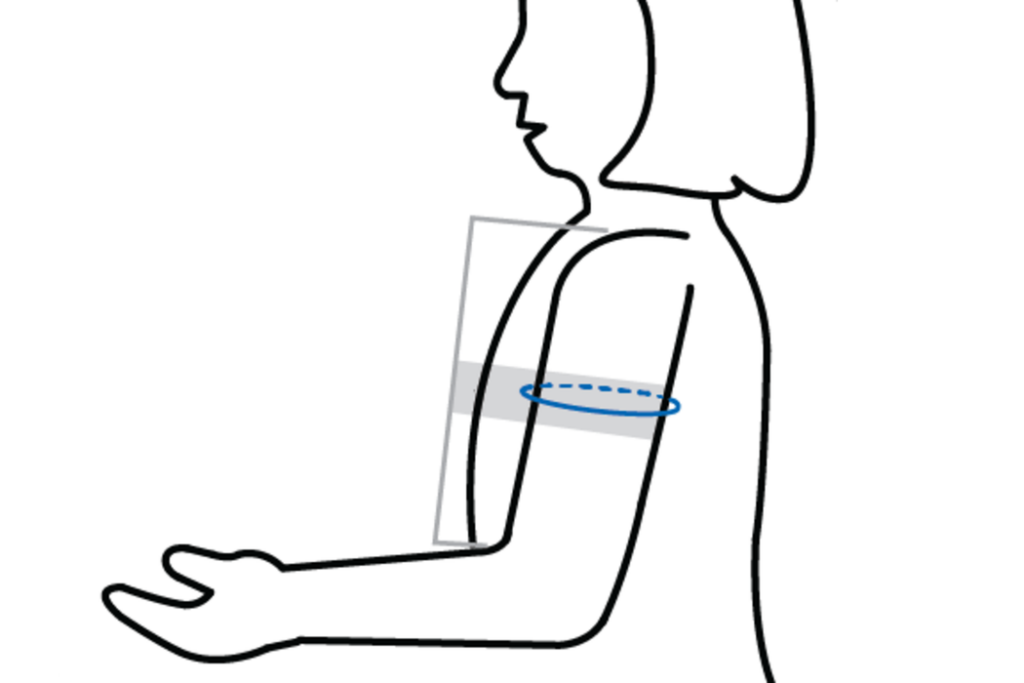Maybe you were just diagnosed with Hypertension (aka High Blood Pressure), or you’ve had it for years and your doctor now wants you to start monitoring your blood pressure at home.
This can be a little overwhelming for many people, and it can bring up lots of questions, like will it be as accurate as when they take my BP at the doctor’s office? And how do I make sure I get a good reading?
But have no fear! With a little bit of background information and some practice, you’ll become a pro in no time.
Will my reading be as accurate as at the doctor’s office?
Many home blood pressure monitors are just as accurate as the doctor’s office. In fact, many doctors have started using automated BP devices in their offices because they eliminate the human error of manual methods.
But before you strap that cuff on, there are a few things to pay attention to first:
Use a clinically validated blood pressure monitor
This is more than just receiving clearance from the FDA, which is required for all blood pressure monitors sold in the US.
Clinical validation is an independent study that verifies the accuracy of the device using standardized medical protocols, and these studies are then published in peer-reviewed medical journals.
You can view our clinical validations here.


Use the right size cuff
Cuff size matters!
If the cuff you use is too small, your blood pressure reading will be artificially high. If your cuff is too large, you may get a lower-than-actual reading.
To determine the right cuff size for you, with your arm hanging at the side of your body, measure the circumference of your upper arm at the midpoint between shoulder and elbow.
Understand what can impact your measurements
While it might seem obvious that if you just went on a run or had an argument, you blood pressure might be a little high. But there are many other factors that can cause variations in your measurements, including the time of day, climate, altitude, and even the season.
On top of that, what you eat or drink (think caffeine) or even if you need to use the restroom can shift your measurements from your normal levels.
- For 30 minutes before you take your measurement, do not exercise, drink coffee, caffeinated soda, or alcohol, and do not smoke.
- Sit quietly for 5-10 minutes to relax.

How do I make sure I am taking a good reading?
Now that we’ve gotten the background information out of the way, it’s time to get started!
- Sit with your back straight, your legs uncrossed, and your feet flat on the floor.
- Place the cuff on your left arm or wrist (unless your doctor has advised you to use your right side).
- For upper arm monitors, wrap the cuff around the middle of your bare upper arm, about ½” above the elbow. It should be fastened snugly, but you should be able to slide two fingers underneath the cuff. Place the air hose on the inside of the arm near the crook of your elbow so that the artery position mark (if your model has one) is aligned with your brachial artery.
- For wrist monitors, with the palm facing upwards, attach the monitor to the inside of your wrist. Fasten securely with the top edge of the cuff aligned with the crease of your wrist.
- Rest your arm on a table so cuff is at heart level.
- For upper arm monitors, the cuff around your upper arm should be even with your heart. Your hand should rest on the table, palm up.
- For wrist monitors, you’ll need to bend your elbow to bring your wrist to heart level. Positioning your wrist at heart level is critical for an accurate measurement.
- Press start. During your measurement, do not talk, move, or eat. Any one of these things can impact your measurement.
That’s all there is to it!
Bonus Tips
If you want to go the extra mile, there are a few more best practices:
- Measure two times a day: once in the morning and once in the evening, preferably at the same time each day.
- Log your blood pressure in a logbook or app, like A&D Connect.
- Take multiple readings and average the results. Some monitors have this feature built in.
If you’re taking your blood pressure at home, you’re ahead of the curve. According to the American Heart Association, 46% of adults have hypertension, and monitoring at home has many benefits, like tracking your treatment, cutting your healthcare costs, and more.
To learn more about Hypertension or why A&D believes you’re More Than a Measurement, click here.

